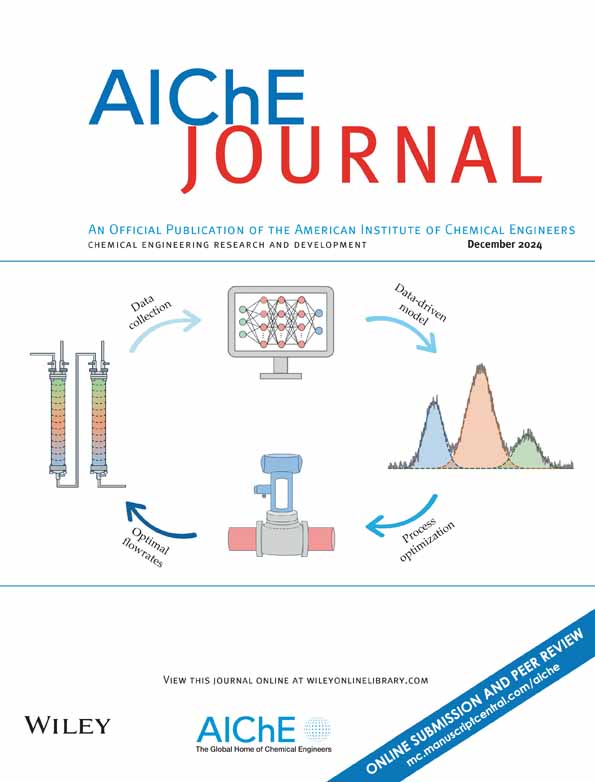Boosting CO2 photoreduction by creating electron mediator in carbon-enriched poly(heptazine imide)
IF 3.5
3区 工程技术
Q2 ENGINEERING, CHEMICAL
引用次数: 0
Abstract
The insufficient light absorption capacity and severe photogenerated carrier recombination limit the overall efficiency of photocatalysts. Herein, we designed carbon-rich poly(heptazine imide) (PHI) by copolymerization of melamine and 2,4,6-triamine-pyrimidine with KCl/KI. This material has been demonstrated to markedly enhance the utilization rate of photons while simultaneously optimizing the charge efficiency of photogenerated electrons. The carbon-rich PHI showed a higher CO₂ reduction efficiency than the PHI, with a CO generation rate reaching 46.6 μmol g−1 h−1. To overcome the obstacle of slow mass transfer, a flow reactor was designed in-house. The CO yield on carbon-rich PHI in the home-built flow reactor was found to be as high as 153 μmol g−1 h−1, which is 3.3 times that observed in the batch reactor. The findings of the experimental study are in alignment with the results of the theoretical modeling, which was based on the finite volume analysis method.富碳聚七嗪亚胺中电子介质的生成促进CO2光还原
光吸收能力不足和光生载流子复合严重限制了光催化剂的整体效率。本文以三聚氰胺和2,4,6-三胺嘧啶为原料,以KCl/KI共聚设计了富碳聚七嗪亚胺(PHI)。该材料已被证明可以显著提高光子的利用率,同时优化光生电子的电荷效率。富碳PHI的CO₂还原效率高于PHI, CO生成速率达到46.6 μmol g−1 h−1。为克服传质缓慢的障碍,自行设计了流动反应器。在自制的流动反应器中,富碳PHI的CO产率高达153 μmol g−1 h−1,是间歇式反应器的3.3倍。实验研究结果与基于有限体积分析方法的理论建模结果一致。
本文章由计算机程序翻译,如有差异,请以英文原文为准。
求助全文
约1分钟内获得全文
求助全文
来源期刊

AIChE Journal
工程技术-工程:化工
CiteScore
7.10
自引率
10.80%
发文量
411
审稿时长
3.6 months
期刊介绍:
The AIChE Journal is the premier research monthly in chemical engineering and related fields. This peer-reviewed and broad-based journal reports on the most important and latest technological advances in core areas of chemical engineering as well as in other relevant engineering disciplines. To keep abreast with the progressive outlook of the profession, the Journal has been expanding the scope of its editorial contents to include such fast developing areas as biotechnology, electrochemical engineering, and environmental engineering.
The AIChE Journal is indeed the global communications vehicle for the world-renowned researchers to exchange top-notch research findings with one another. Subscribing to the AIChE Journal is like having immediate access to nine topical journals in the field.
Articles are categorized according to the following topical areas:
Biomolecular Engineering, Bioengineering, Biochemicals, Biofuels, and Food
Inorganic Materials: Synthesis and Processing
Particle Technology and Fluidization
Process Systems Engineering
Reaction Engineering, Kinetics and Catalysis
Separations: Materials, Devices and Processes
Soft Materials: Synthesis, Processing and Products
Thermodynamics and Molecular-Scale Phenomena
Transport Phenomena and Fluid Mechanics.
 求助内容:
求助内容: 应助结果提醒方式:
应助结果提醒方式:


